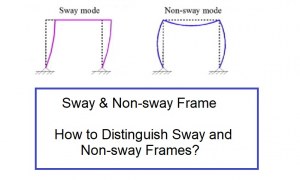🕑 Reading time: 1 minute
Soldier pile retaining wall is usually employed for situations where the earth backfill is needed to be retained temporarily for example at construction site. Soldier pile wall consist of wide flange steel beams (soldier piles) and wood lagging. The former is either forced into the ground to an adequate depth or installed into holes, which are drilled in advance, then encased in lean concrete to oppose or withstand the moment exerted by soil and the spacing is commonly between 1.8 m to 2.45 m. The latter is placed horizontally after excavation is completed and supported by soldier pile flanges at its ends. Soldier piles are cantilevered, but tie backs can be used to decrease embedment depth and size of the beams in cases where the height of the wall is greater than 4.5 m and enough space is available for using the ties.Contents:
Components of Soldier Pile Retaining Wall
Figure-1 illustrates different parts of soldier pile retaining wall.
Figure-1: Typical Soldier Pile Retaining Wall Components
Design of Soldier Pile Retaining Wall
Data Required for Soldier Pile Wall Design
These includes nature of the soil, friction angle of the soil, density of the soil, passive and active allowable pressures, arching factors to use, and other recommendations which specifically related to the site. Finally, Choose cost effective beams.Soldier Pile Wall Design Procedures
In the design methodology, which is explained in the following section, certain assumptions are made. Firstly, it is assumed that the soil is non-cohesive or sandy otherwise, for example when the soil type is clay, different passive resistant diagram should be employed. Secondly, this procedure is applicable for cantilevered soldier pile walls therefore using tiebacks is not accounted for in this methodology.Design steps:
1. Compute forces which are exerted by construction surcharges and pressure of active soil tributary to each soldier pile, Rankine formula could be used for calculation of active pressure coefficient (Ka). 2. Spacing of the piles is determined depend on beam size, embedment depth, and choosing of lagging. Several design calculations may be necessary to use to determine the best spacing option. 3. Determine embedment depth after both surcharge (Pw) and active pressure (Pa) is calculated. Figure-2 shows different forces which cantilevered soldier pile wall subjected to in a sandy soil. The embedment depth (d) of the pile is computed using equation-1 and it is the function of passive pressure and arching factor which is denoted as (f) and taken as 0.08 but should not surpass 2.5.
Figure-2: Various forces acting on cantilevered soldier pile on non-cohesive soil
4. Calculate maximum beam moment by taking moment summation above zero shear point. The following equation can be used straight away.Using Tiebacks in Soldier Pile Retaining Walls
Tiebacks are used when the height of the wall exceeds 4.5m and adequate space is available. Not only is tieback utilization decline the size of soldier piles but also the embedment depth. Generally, tiebacks are steel rods which are placed into a 7.62 mm drilled hole into the backfill an adequate distance that exceeds failure plane for providing anchorage after grouting. Tiebacks are inclined downward at 15o to enhance pulling out resistance and to facilitate grouting. The outside ends of tiebacks are welded to steel beams. Figure-3 shows forces acting on soldier pile in the case where tiebacks are used.
Figure-3: Forces Acting on Soldier Pile after using Tieback
Moreover, the embedment depth should be adequately withstanding the applied lateral forces Pw and Pa. Finding (d) is an iterative process; the value by which active and passive balance is obtained will be (d). After that the maximum bending moment could be computed by applying statics. Read More: Loads and Forces Acting on Retaining Wall and Their Calculations Why Retaining Walls Fail? Causes for Retaining Wall Failure More Articles on Retaining Wall Design

